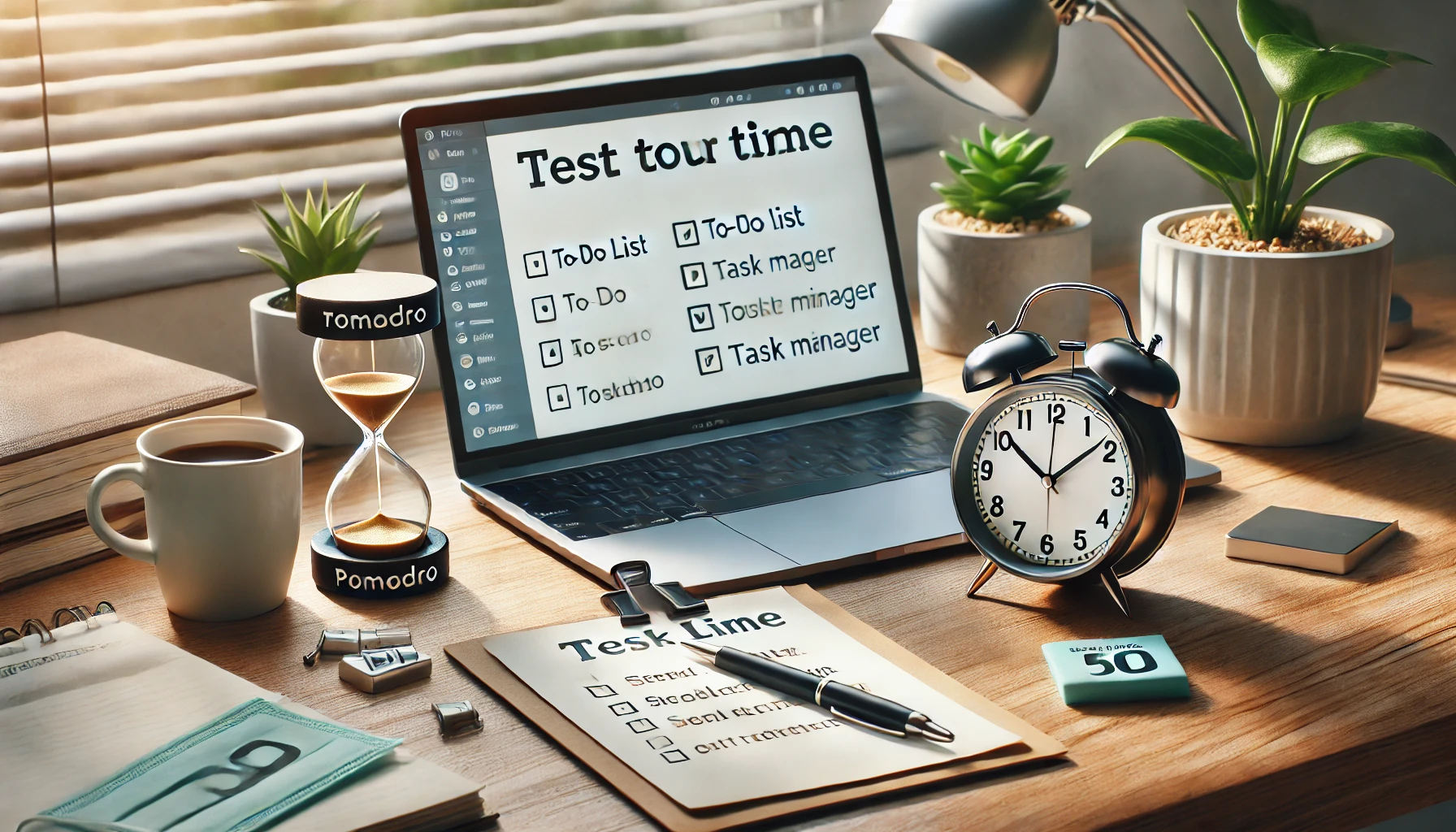Productivity isn’t just about working harder—it’s about working smarter. Many people struggle with distractions, procrastination, and inefficient work habits. However, by using proven productivity techniques, you can get more done in less time while maintaining a balanced life.
In this article, we’ll explore 10 highly effective productivity techniques that actually work, helping you focus, organize your tasks, and achieve your goals.
1. The Pomodoro Technique
The Pomodoro Technique is a time management method that improves focus and reduces burnout. It involves working in short, focused intervals with regular breaks.
How It Works:
- Choose a task.
- Set a timer for 25 minutes (one “Pomodoro”).
- Work on the task without distractions.
- When the timer rings, take a 5-minute break.
- After completing four Pomodoros, take a longer 15–30-minute break.
✅ Why It Works: It helps maintain focus, prevents mental fatigue, and makes overwhelming tasks feel more manageable.
2. The Eisenhower Matrix (Urgent-Important Principle)
The Eisenhower Matrix helps you prioritize tasks based on urgency and importance. It divides tasks into four categories:
| Urgency/Importance | Action | Example |
|---|---|---|
| Urgent & Important | Do it now | Project deadline, urgent emails |
| Important but Not Urgent | Schedule it | Exercise, skill development |
| Urgent but Not Important | Delegate it | Routine emails, meetings |
| Not Urgent & Not Important | Eliminate it | Social media scrolling, distractions |
✅ Why It Works: It forces you to focus on tasks that truly matter instead of reacting to every urgency.
3. The Two-Minute Rule
The Two-Minute Rule, from David Allen’s Getting Things Done, states:
👉 “If a task takes less than two minutes to complete, do it immediately.”
Examples:
- Replying to a short email
- Cleaning up your desk
- Making a quick phone call
✅ Why It Works: Small tasks don’t pile up, making your to-do list less overwhelming.
4. Time Blocking
Time Blocking involves scheduling specific blocks of time for different tasks instead of working reactively.
How to Use It:
- Identify key tasks for the day.
- Assign time slots for each task (e.g., “Deep Work from 9:00–11:00 AM”).
- Stick to the schedule and avoid multitasking.
✅ Why It Works: It eliminates decision fatigue and helps maintain focus by dedicating time to specific tasks.
5. Eat the Frog (Tackle the Hardest Task First)
Coined by Brian Tracy, the Eat the Frog technique suggests starting your day with the most challenging task—the one you’re most likely to procrastinate on.
Steps to Follow:
- Identify your biggest, most difficult task.
- Do it first thing in the morning.
- Enjoy the sense of accomplishment for the rest of the day.
✅ Why It Works: It builds momentum and makes the rest of the day feel easier.
6. The 80/20 Rule (Pareto Principle)
The Pareto Principle states that 80% of results come from 20% of efforts. This means that not all tasks are equally important.
How to Apply It:
- Identify the 20% of tasks that create 80% of your results.
- Focus more on high-impact activities.
- Eliminate or delegate low-value tasks.
✅ Why It Works: It maximizes efficiency by concentrating on the most productive tasks.
7. Batching Similar Tasks Together
Task batching is the practice of grouping similar tasks and completing them in dedicated time blocks.
Examples:
- Answering all emails at once instead of checking them throughout the day.
- Scheduling multiple meetings in a row to free up focus time.
- Doing all creative work (writing, designing) in one block.
✅ Why It Works: It reduces mental switching costs and improves efficiency.
8. The Ivy Lee Method (Daily Prioritization)
The Ivy Lee Method is a simple way to improve productivity by prioritizing your most important tasks each day.
Steps to Follow:
- At the end of each day, list the six most important tasks for tomorrow.
- Prioritize them in order of importance.
- Start with the first task the next morning.
- Work through the list in order—don’t move to the next until the current one is done.
✅ Why It Works: It removes decision fatigue and ensures focus on key tasks.
9. The Rule of Three
The Rule of Three suggests focusing on just three main goals per day, week, or month.
How to Apply It:
- Set three key tasks to complete today.
- Define three major goals for the week.
- Identify three life goals to work toward.
✅ Why It Works: It prevents overwhelm and keeps priorities clear.
10. The 5-Second Rule (Overcoming Procrastination)
Developed by Mel Robbins, the 5-Second Rule helps you take action immediately:
👉 “If you have an impulse to act on a goal, count down from 5-4-3-2-1 and physically move.”
Examples:
- Struggling to wake up? 5-4-3-2-1, get out of bed.
- Hesitating to send an email? 5-4-3-2-1, hit send.
- Avoiding a workout? 5-4-3-2-1, start moving.
✅ Why It Works: It stops overthinking and pushes you into action.
Final Thoughts
Productivity isn’t about working longer hours—it’s about working smarter. By implementing these proven techniques, you can manage your time better, reduce stress, and achieve more with less effort.
Start with one or two techniques and gradually incorporate more as you build better habits.
Which technique do you want to try first? Let us know in the comments!
